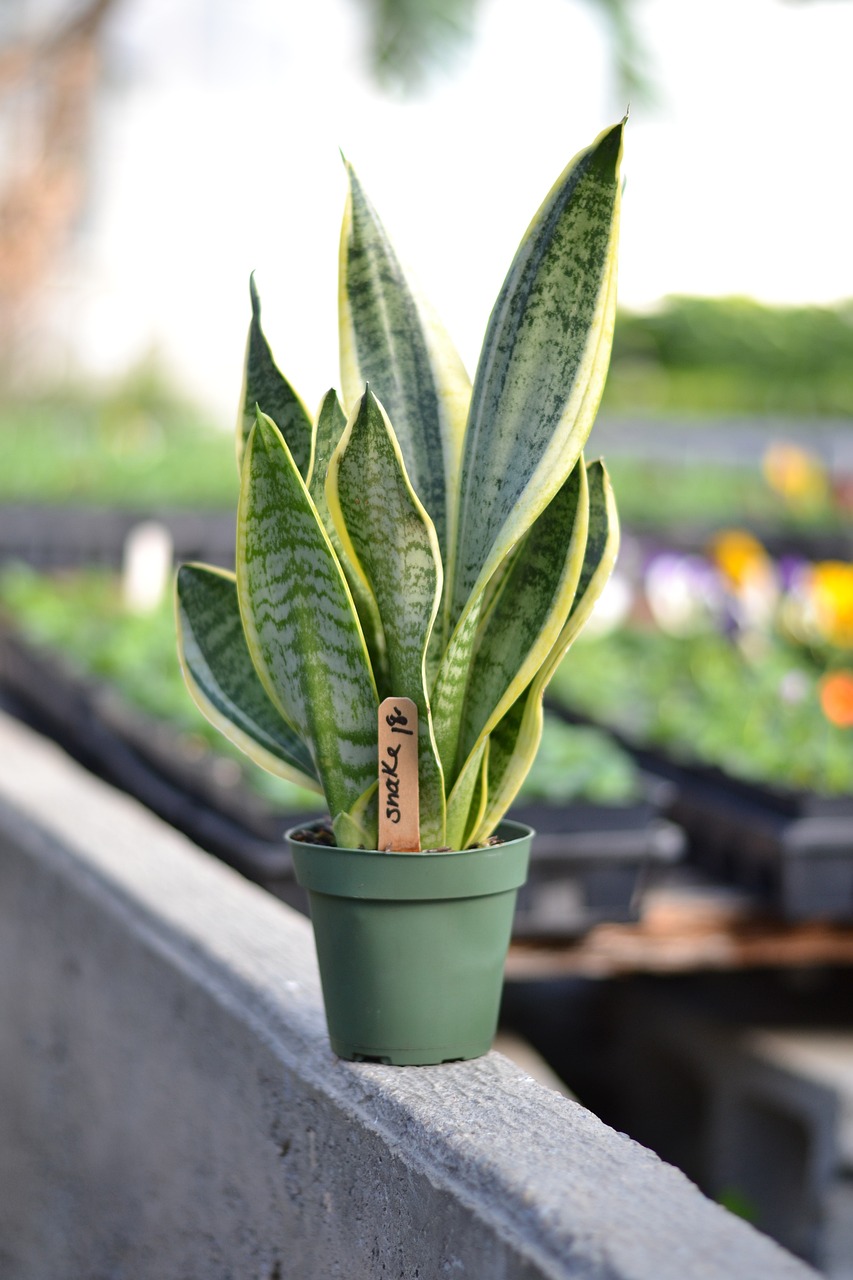Snake plants, also known as Sansevieria, are not only visually appealing but also incredibly resilient. If you’re looking to expand your collection or share the joy of these plants with friends and family, propagating them is a fantastic option. In this comprehensive guide, we’ll explore various methods to propagate snake plants, ensuring a successful and rewarding experience.
I. Introduction
A. Brief Overview of Snake Plants
Snake plants, with their strikingly upright leaves and minimal care requirements, have become a favorite among plant enthusiasts. Originating from West Africa, these hardy plants are known for their air-purifying qualities and adaptability to various environments.
B. Importance of Propagating Snake Plants
Propagation allows you to increase your snake plant population, fostering a sense of accomplishment as you witness the growth of new plants. Additionally, propagating snake plants is a thoughtful and personalized gift option for fellow plant enthusiasts.
II. Understanding Snake Plant Propagation
A. Basics of Snake Plant Propagation
Before delving into specific methods, understanding the fundamentals of snake plant propagation is crucial. Snake plants can be propagated through division, leaf cuttings, and rhizome division, each with its unique set of steps and considerations.
B. Different Propagation Methods
- Division: Splitting mature plants into smaller sections.
- Leaf Cuttings: Growing new plants from individual leaves.
- Rhizome Division: Propagating using underground stems.
III. Choosing the Right Time
A. Seasonal Considerations
Timing plays a crucial role in successful snake plant propagation. Optimal periods for propagation are during the spring and early summer when the plant is in its active growing phase.
B. Signs That Your Snake Plant Is Ready for Propagation
Look for indicators like overcrowded roots or the presence of offsets (small plantlets) around the base of the mature plant.
IV. Preparing for Propagation
A. Necessary Tools and Materials
Gather essential items such as a sharp knife or scissors, well-draining potting mix, and suitable containers for planting.
B. Ideal Soil Conditions
Snake plants prefer a well-draining soil mix. A combination of potting soil and perlite or sand works well to provide the necessary aeration.
V. Propagation Method 1: Division
A. Step-by-Step Guide
- Choosing a Mature Snake Plant: Select a well-established snake plant with multiple leaves.
- Removing the Plant from its Pot: Gently loosen the soil around the plant and remove it from the pot.
- Dividing the Rhizomes: Locate natural divisions in the rhizomes and separate them.
- Planting the Divided Sections: Plant each section in a new container with fresh soil.
VI. Propagation Method 2: Leaf Cuttings
A. Step-by-Step Guide
- Selecting Healthy Leaves: Choose mature, healthy leaves for cutting.
- Cutting and Preparing the Leaves: Use a sharp knife to cut leaves into sections, ensuring each section has a portion of the base.
- Rooting the Cuttings: Place cuttings in water or directly in soil to encourage root development.
- Transplanting the Rooted Cuttings: Once roots are established, transplant cuttings into individual pots.
VII. Propagation Method 3: Rhizome Division
A. Step-by-Step Guide
- Identifying Rhizomes: Locate underground rhizomes connecting multiple shoots.
- Separating and Planting Rhizomes: Gently separate rhizomes and plant them in new containers.
- Caring for Newly Planted Rhizomes: Provide adequate water and monitor for signs of stress.
VIII. Caring for Newly Propagated Snake Plants
A. Watering and Sunlight Requirements
Newly propagated snake plants require consistent watering, allowing the soil to dry between waterings. Place them in indirect sunlight to encourage healthy growth.
B. Monitoring for Pests and Diseases
Keep an eye out for common issues like spider mites or fungal infections. Address problems promptly to ensure the well-being of your propagated plants.
IX. Troubleshooting Common Issues
A. Yellowing Leaves
Yellowing leaves may indicate overwatering. Adjust your watering routine and ensure proper drainage.
B. Root Rot
Prevent root rot by using well-draining soil and avoiding waterlogged conditions.
C. Slow Growth
Patience is key; newly propagated plants may take some time to establish roots and start growing. Ensure they receive adequate sunlight and nutrients.
X. Benefits of Snake Plant Propagation
A. Increased Plant Population
Propagating snake plants allows you to expand your collection and share the joy of these resilient plants with others.
B. Gifting Propagated Snake Plants
Consider propagating snake plants as a personalized and meaningful gift for friends and family who appreciate the beauty of indoor plants.
XI. Decorating with Snake Plants
A. Incorporating Snake Plants into Home Decor
Explore creative ways to incorporate snake plants into your home decor, adding a touch of greenery to various spaces.
B. Creative Potting Ideas
Experiment with different pot styles and arrangements to enhance the visual appeal of your snake plants.
XII. Conclusion
A. Recap of Propagation Methods
In summary, propagating snake plants can be achieved through division, leaf cuttings, and rhizome division. Each method offers a unique approach, allowing plant enthusiasts to choose the one that best suits their preferences and resources.
B. Encouragement for Plant Enthusiasts
Take the plunge into snake plant propagation, and enjoy the satisfaction of nurturing new life. The process is not only rewarding but also contributes to the overall well-being of your indoor garden.
XIII. FAQs
A. Can I Propagate a Snake Plant in Water?
Yes, snake plants can be propagated in water, especially through leaf cuttings. Simply place the cuttings in water until roots develop, then transplant them into soil.
B. How Often Should I Water Newly Propagated Snake Plants?
Water newly propagated snake plants when the top inch of soil feels dry. Ensure proper drainage to prevent overwatering.
C. Is It Possible to Propagate Snake Plants in Winter?
While it’s possible, the optimal time for propagation is during the active growing season in spring and early summer.
D. Can I Propagate a Snake Plant with Just One Leaf?
Yes, you can propagate a snake plant with a single leaf, following the leaf cutting method outlined in this guide.
E. How Long Does It Take for Propagated Snake Plants to Grow?
The growth rate varies, but with proper care, you can expect noticeable growth within a few weeks to a few months.






